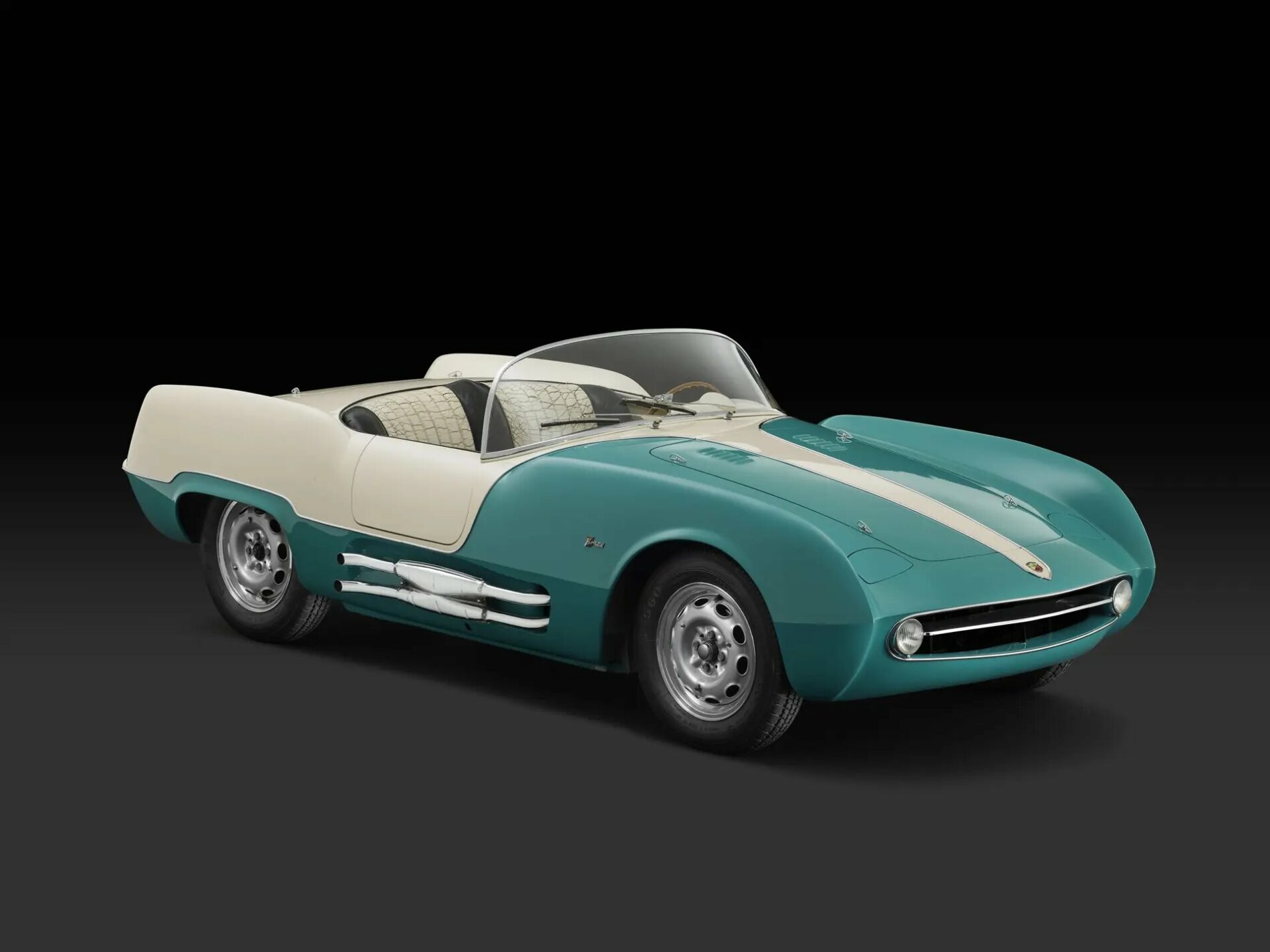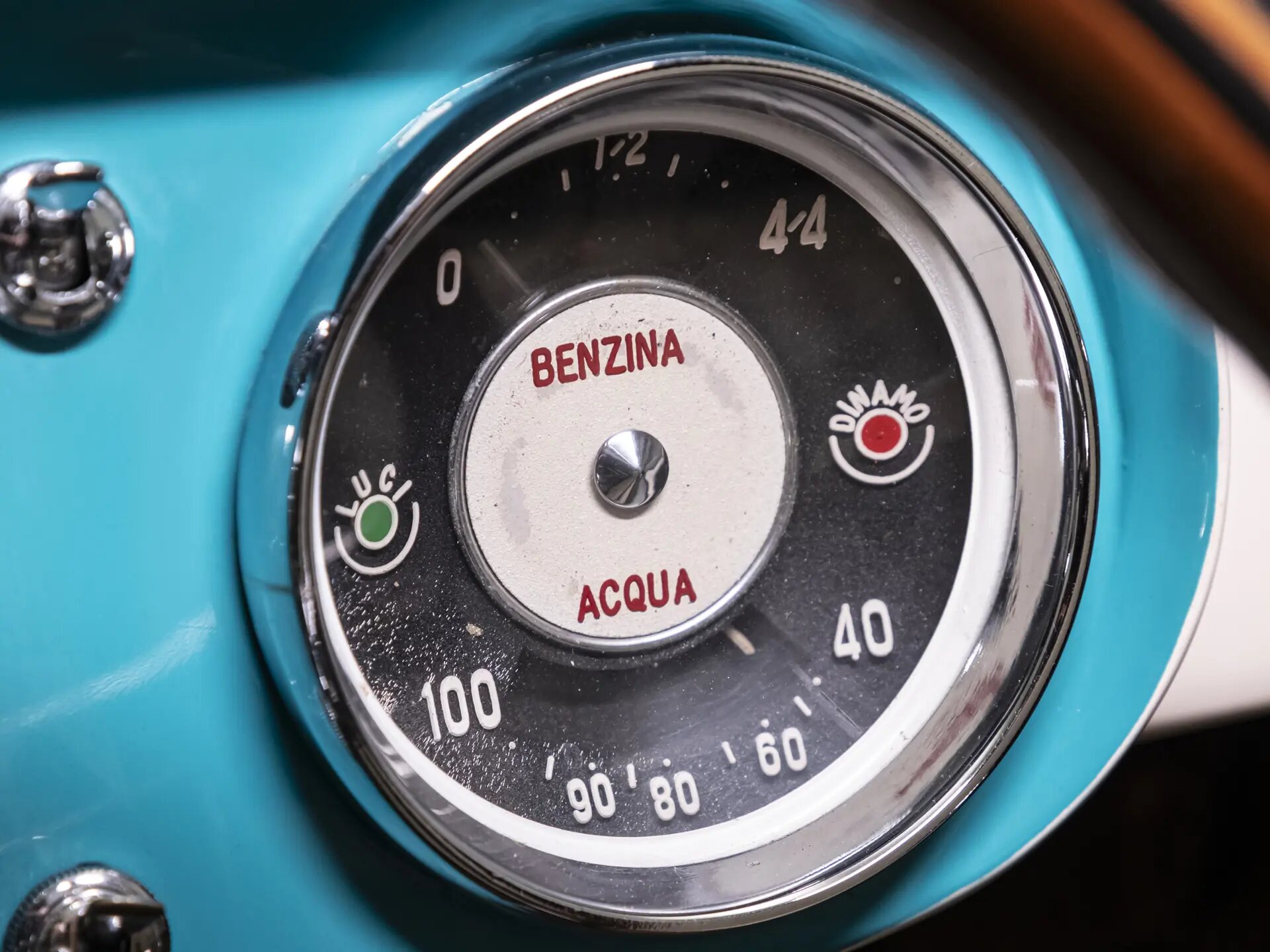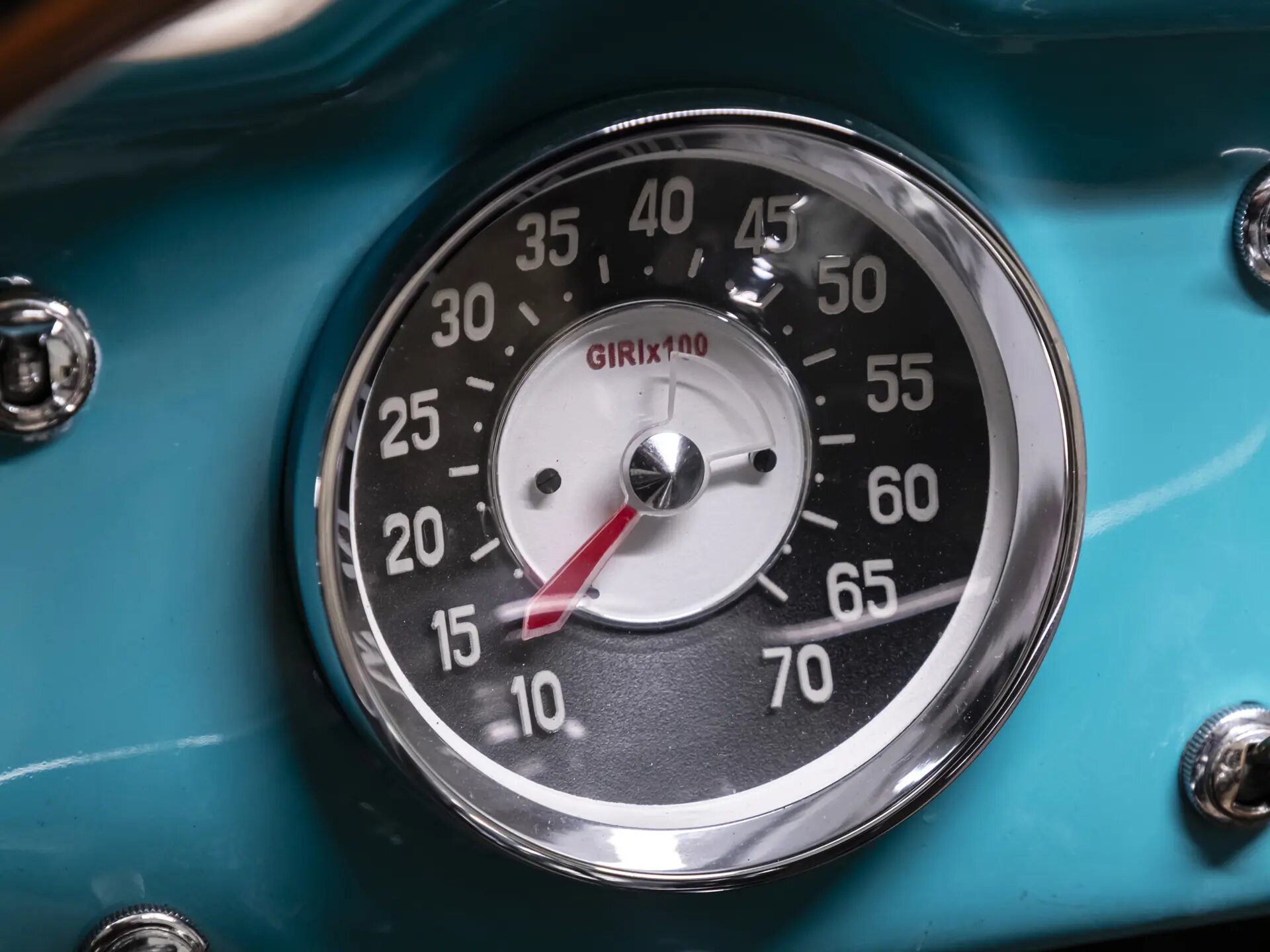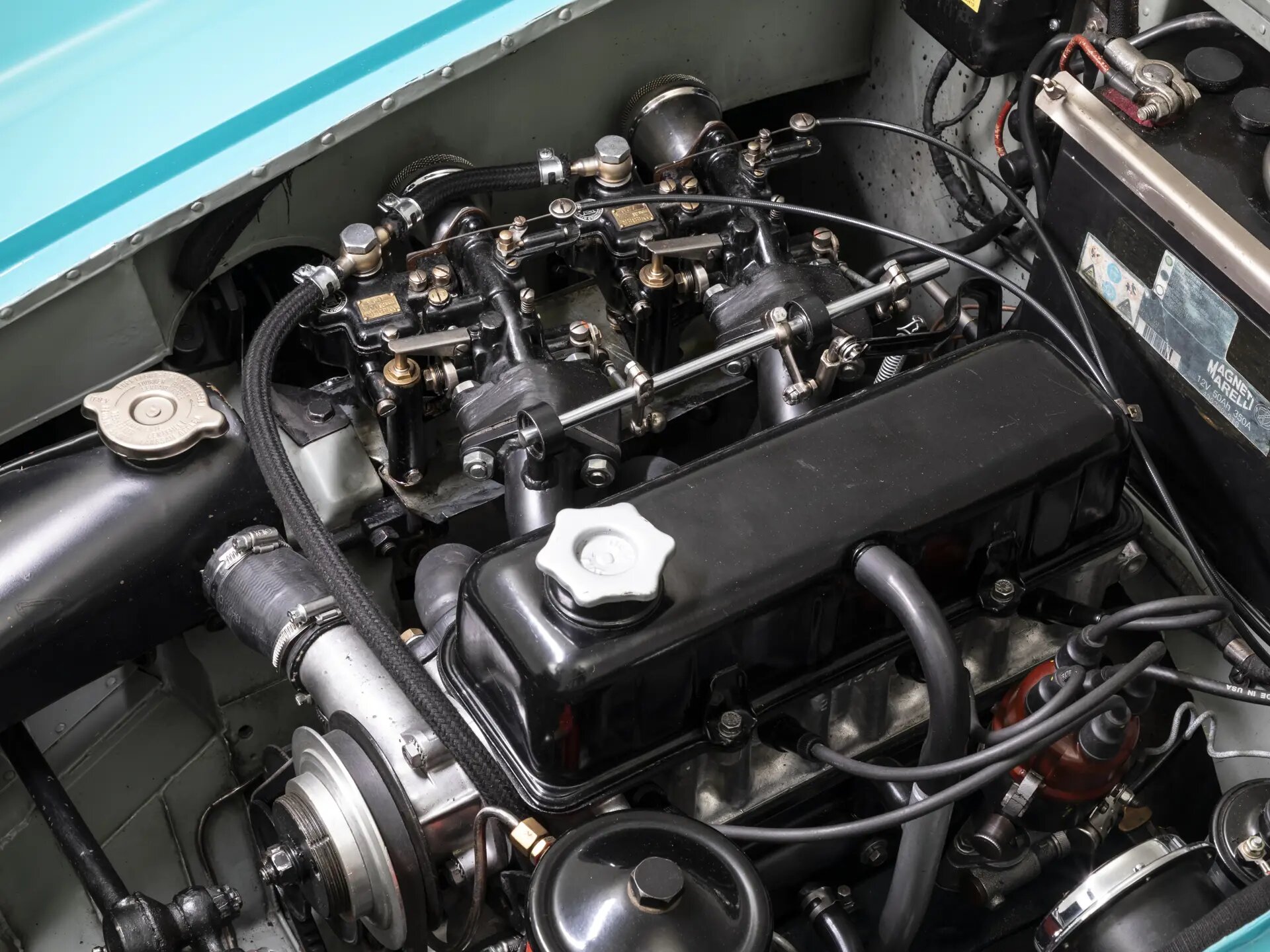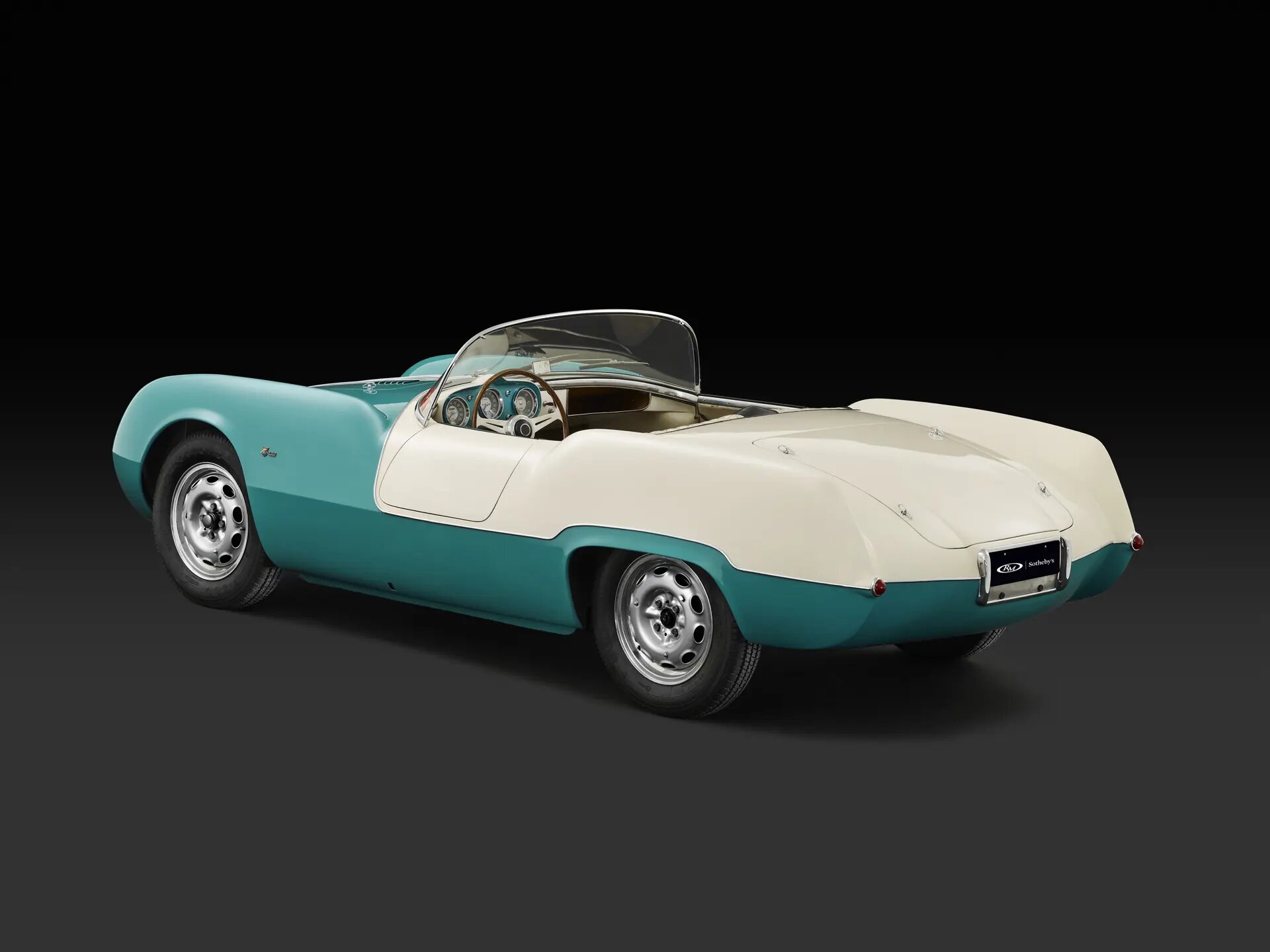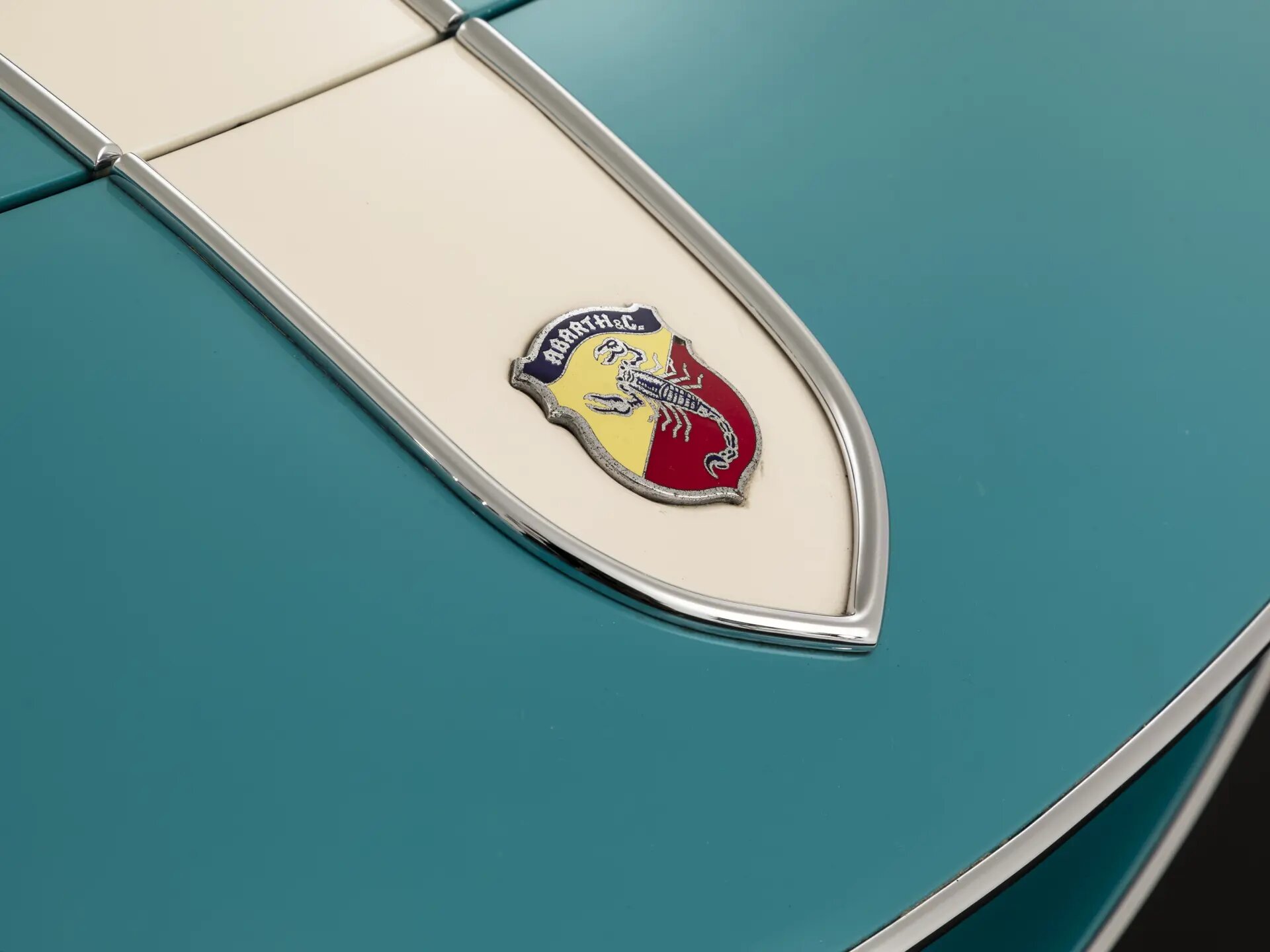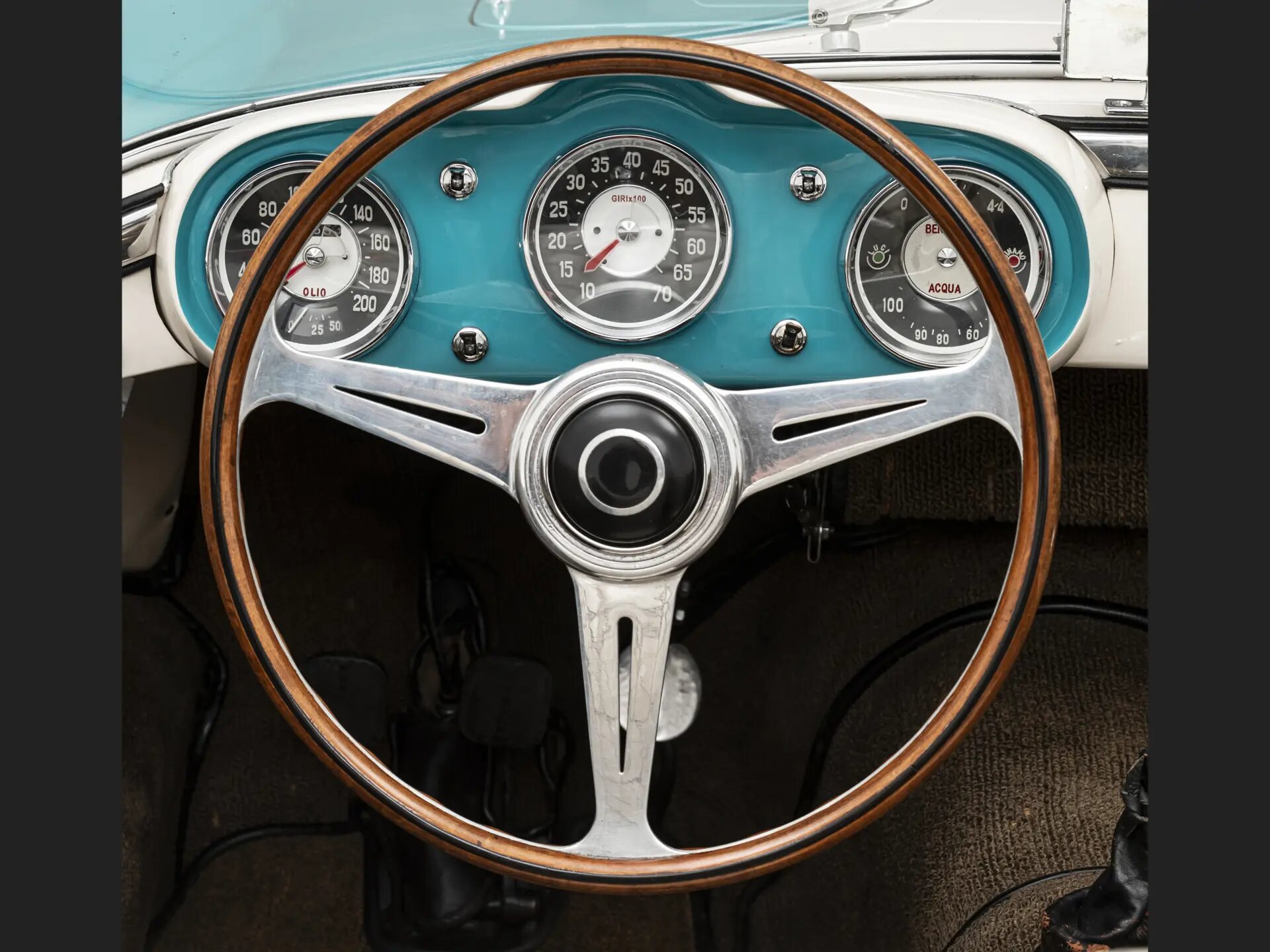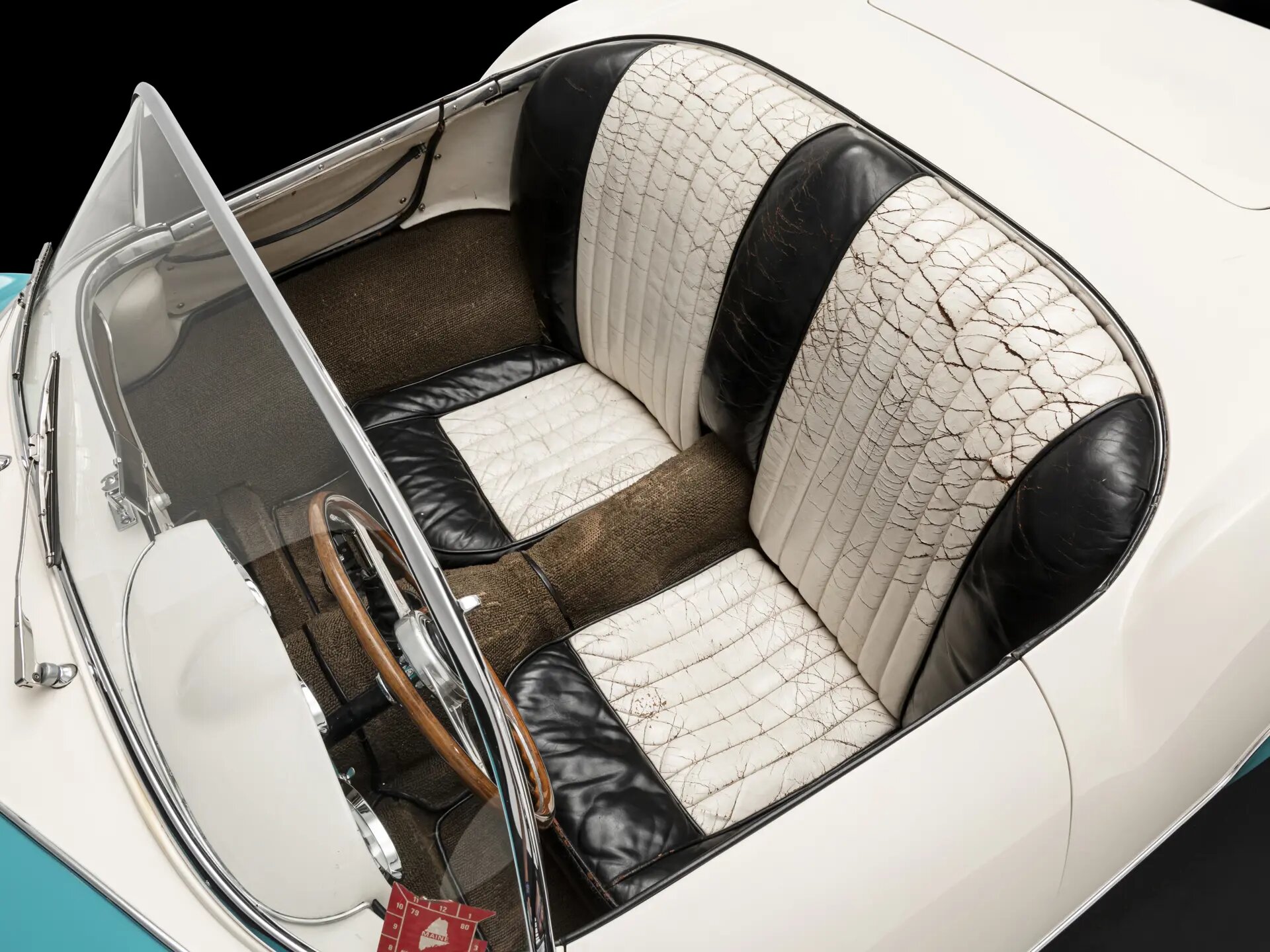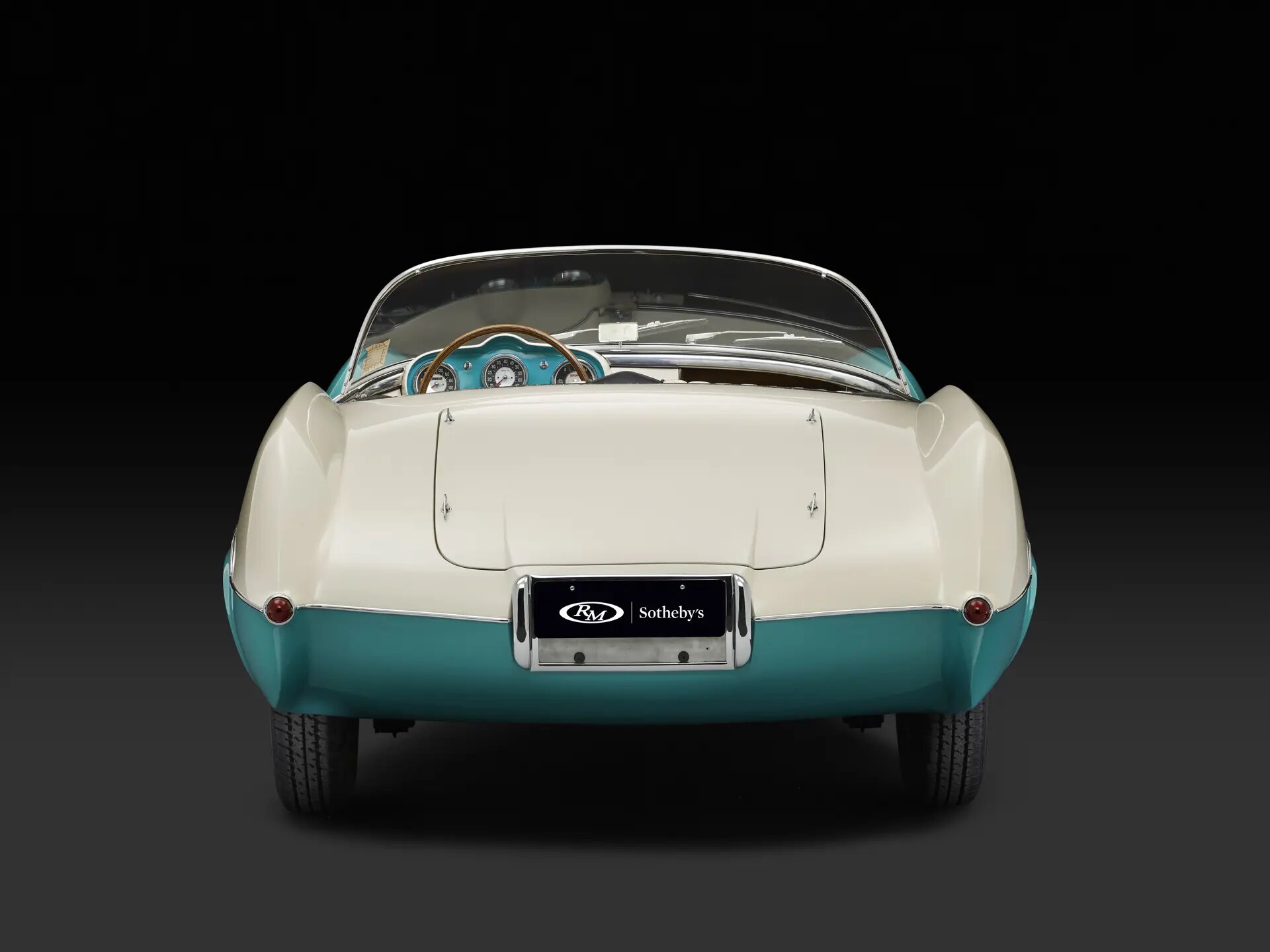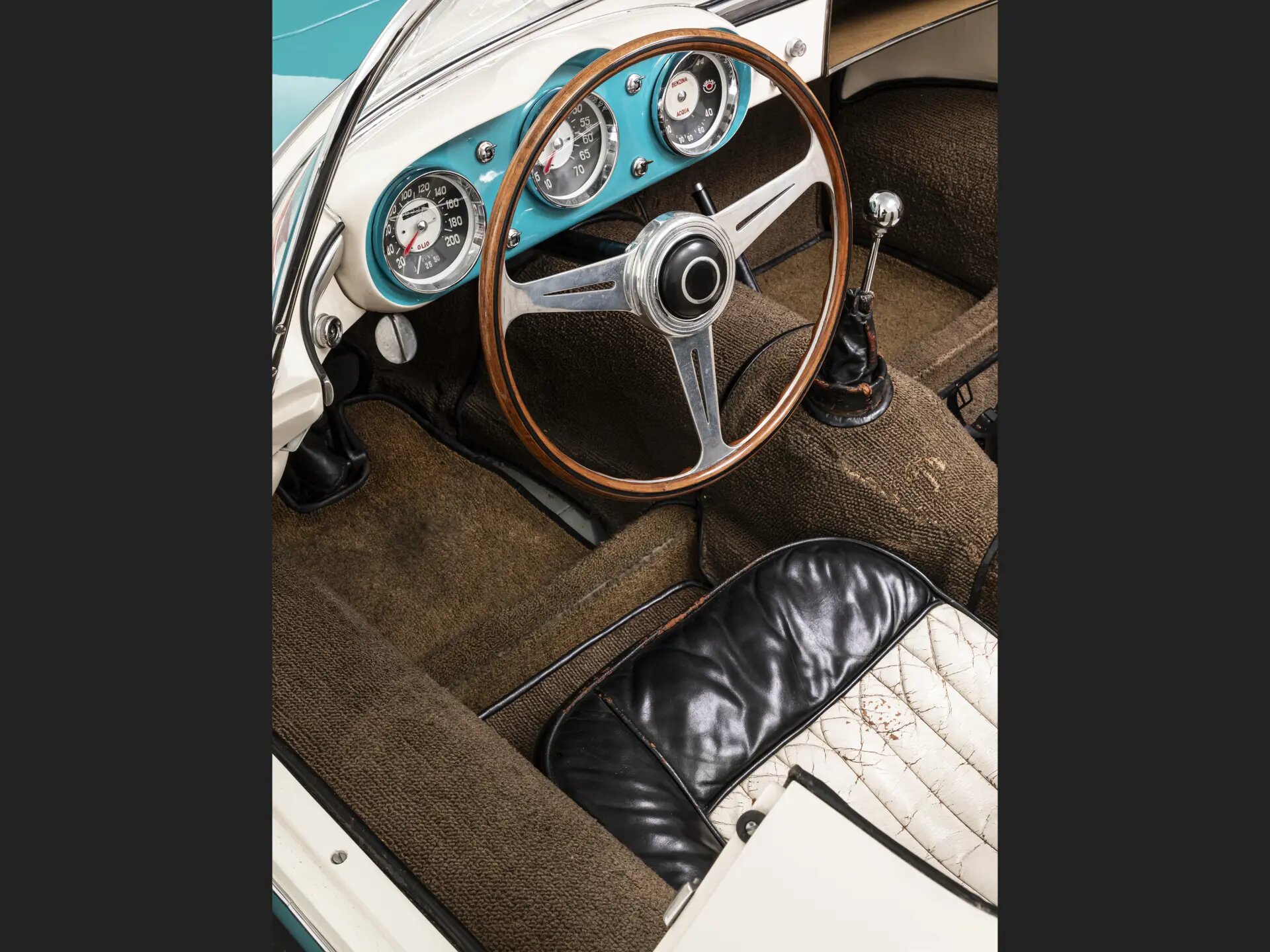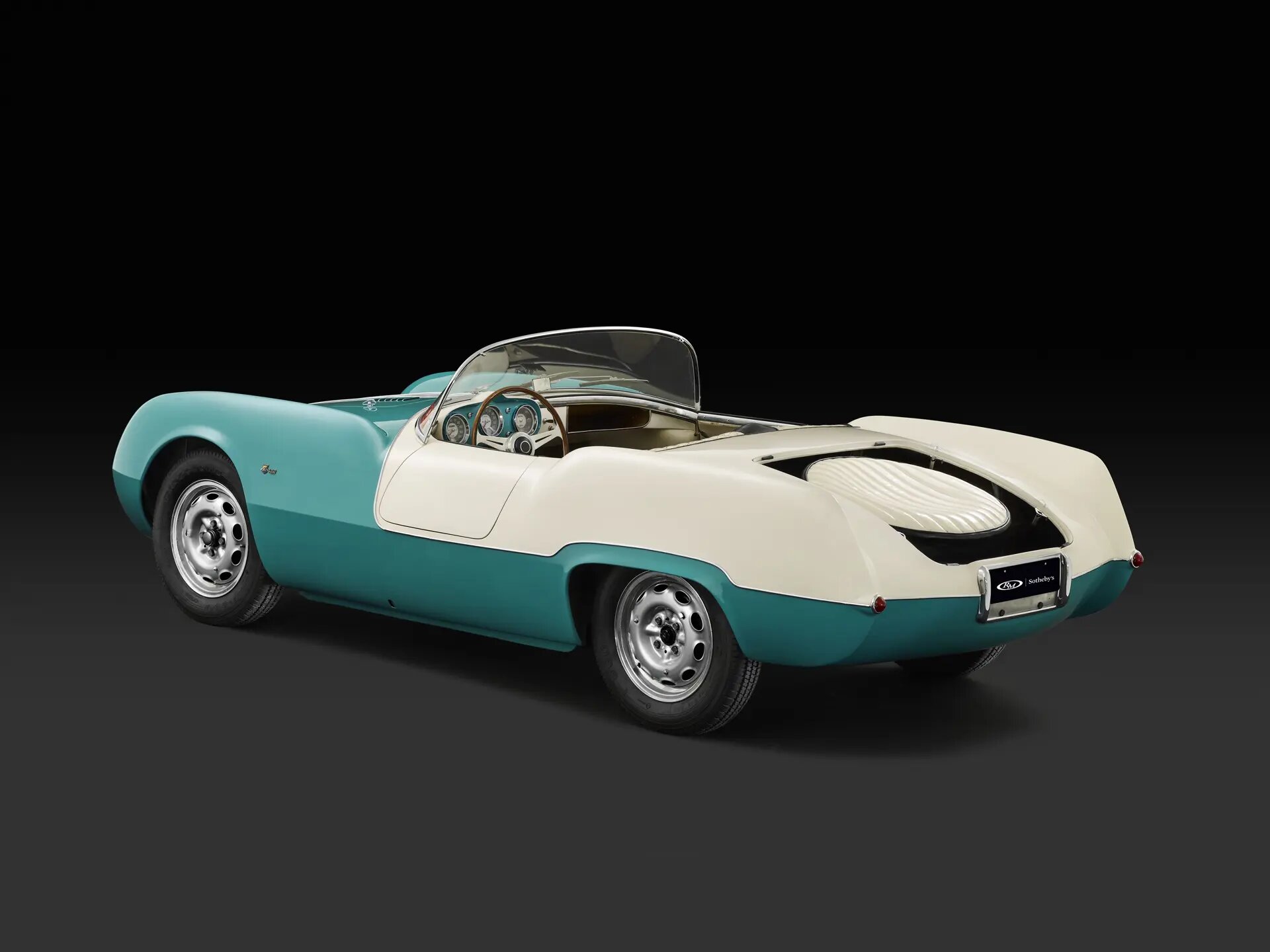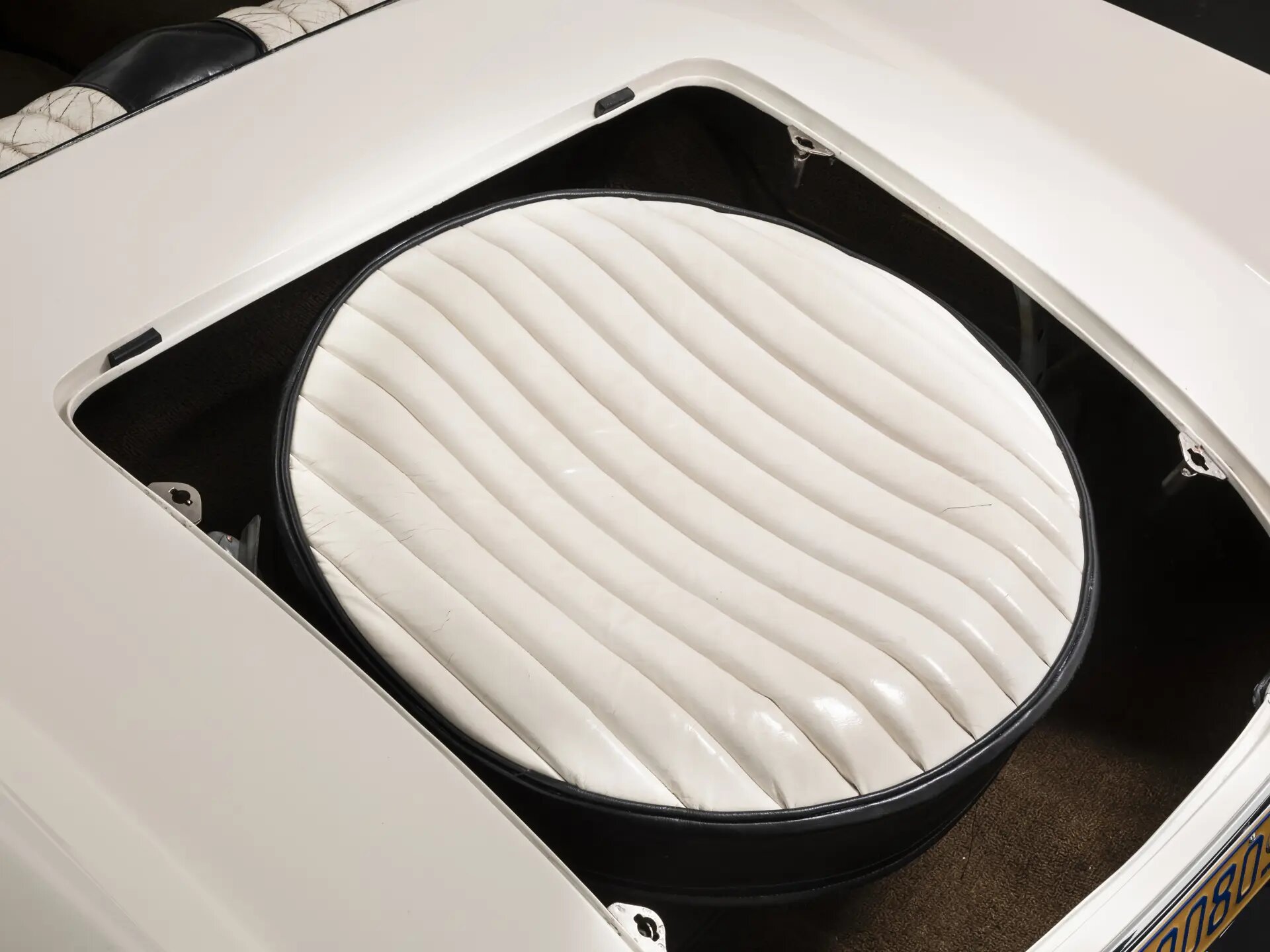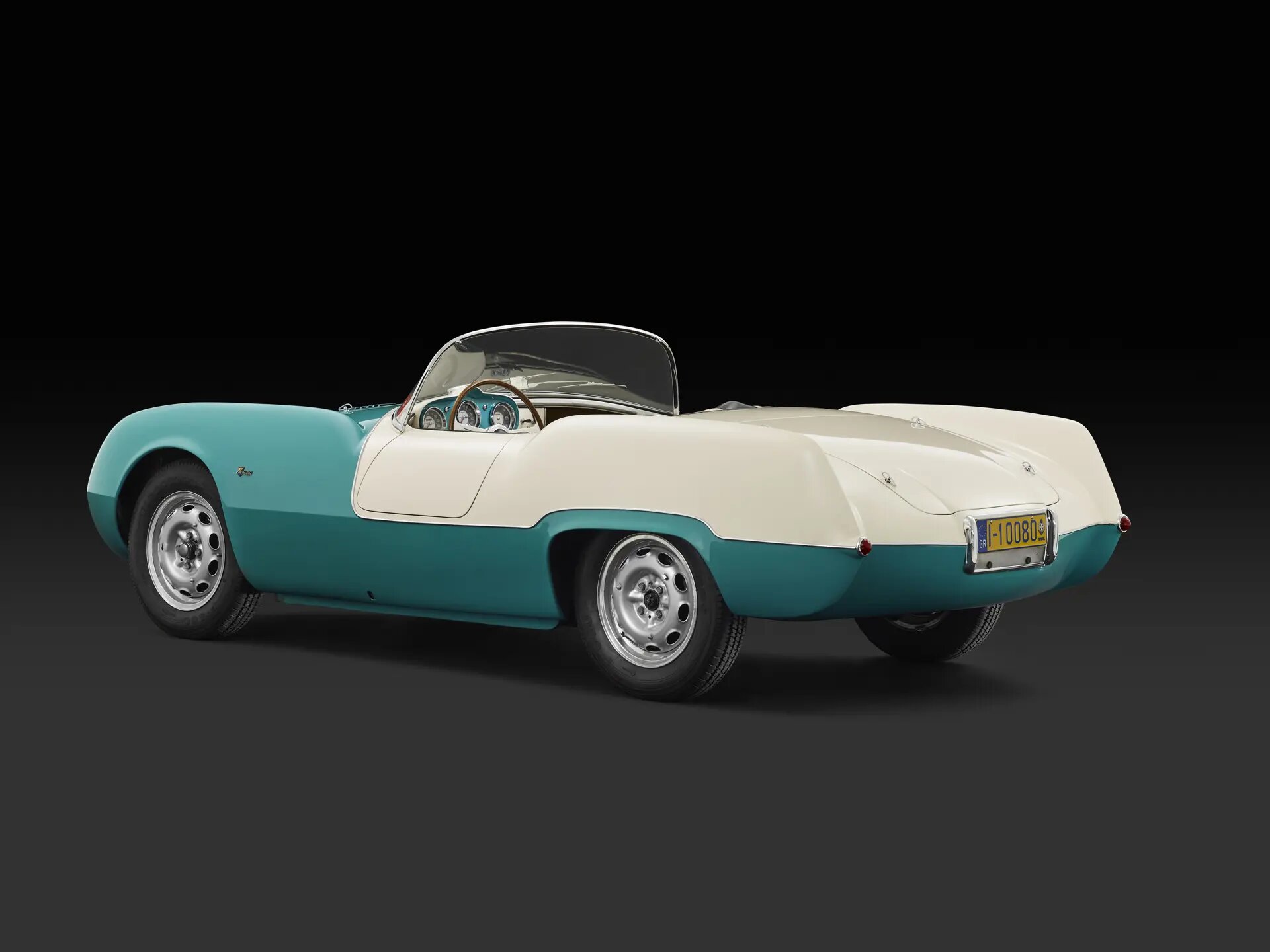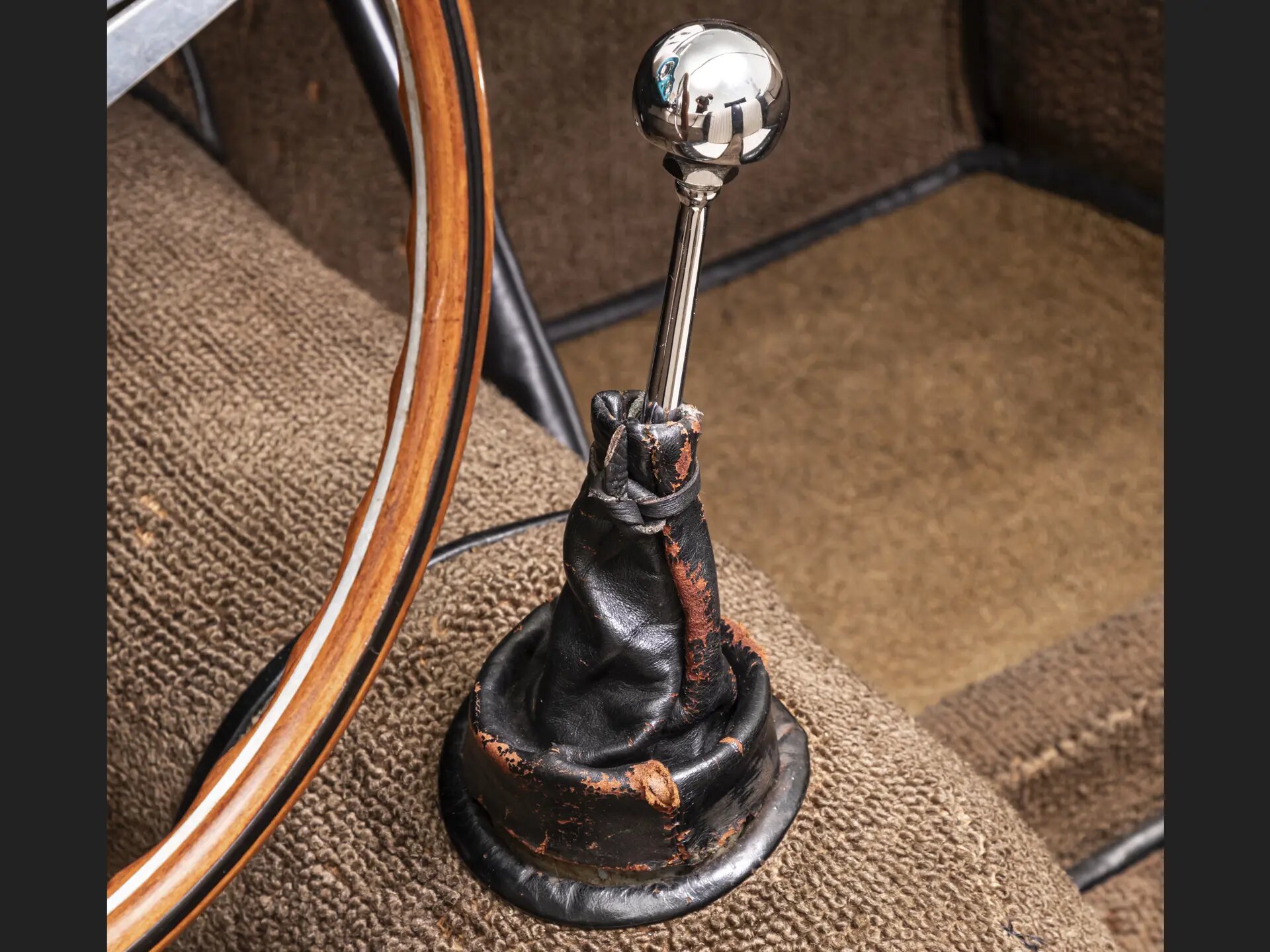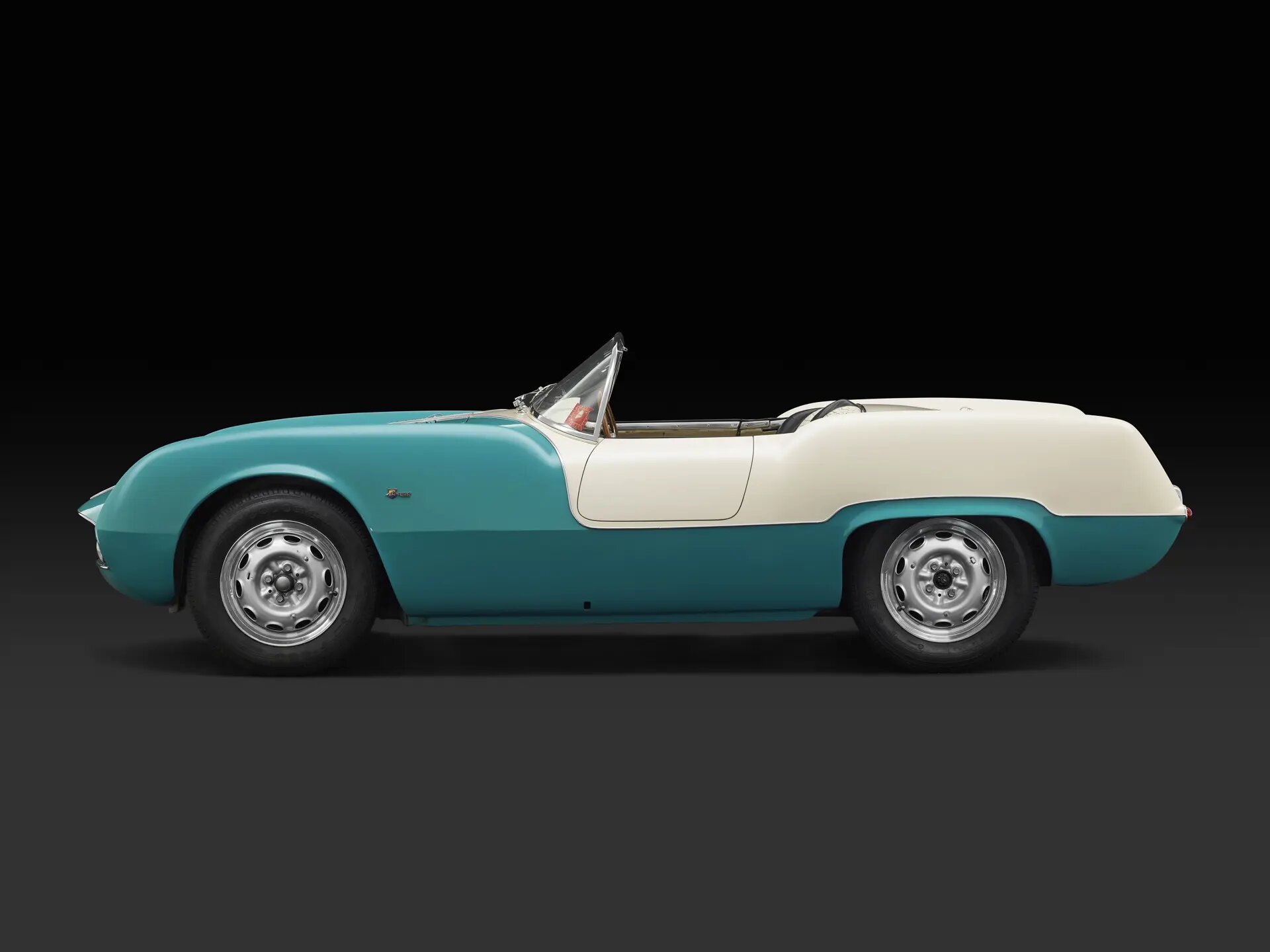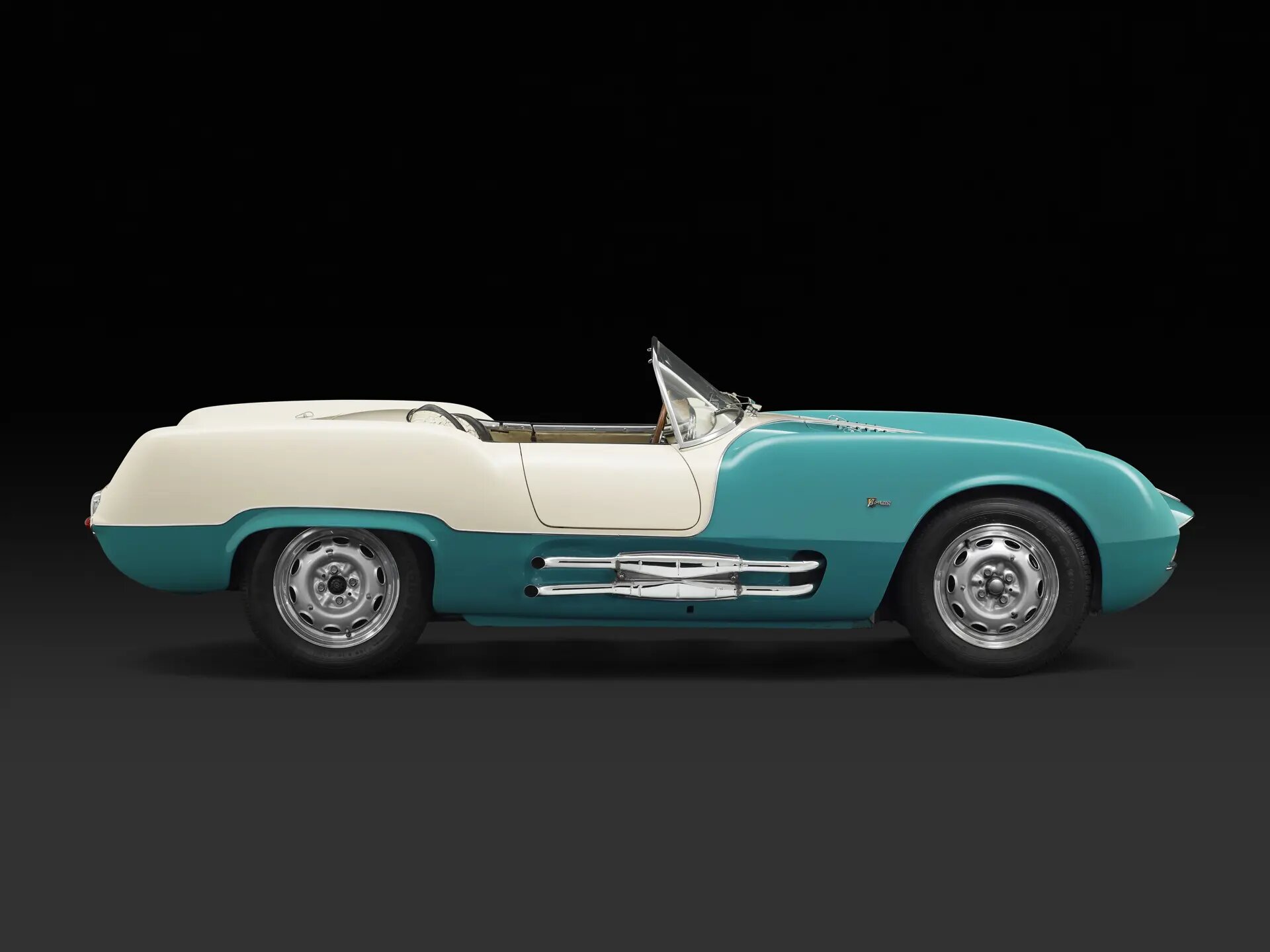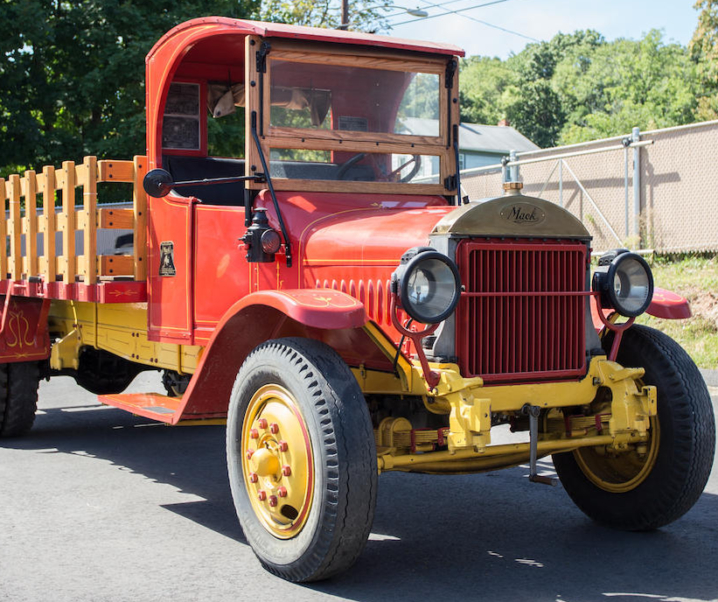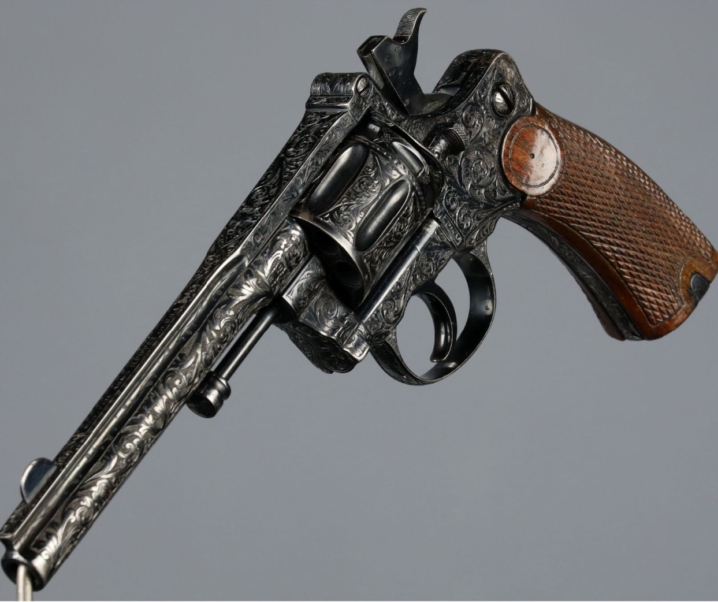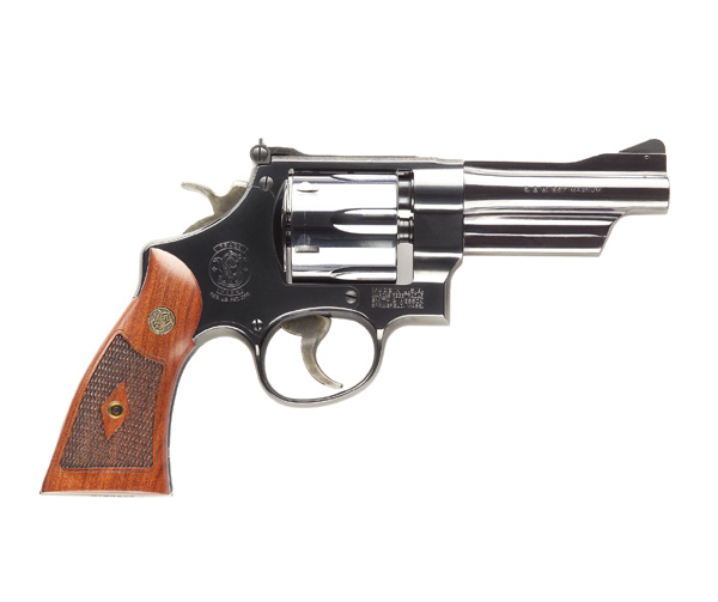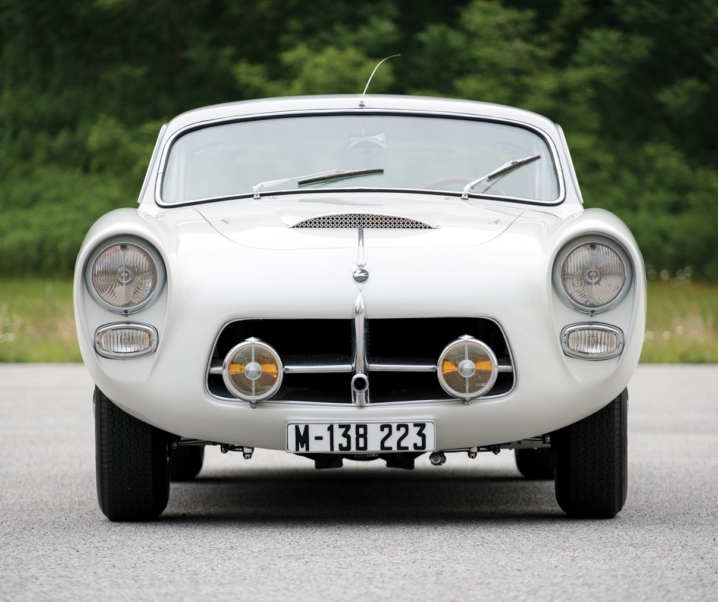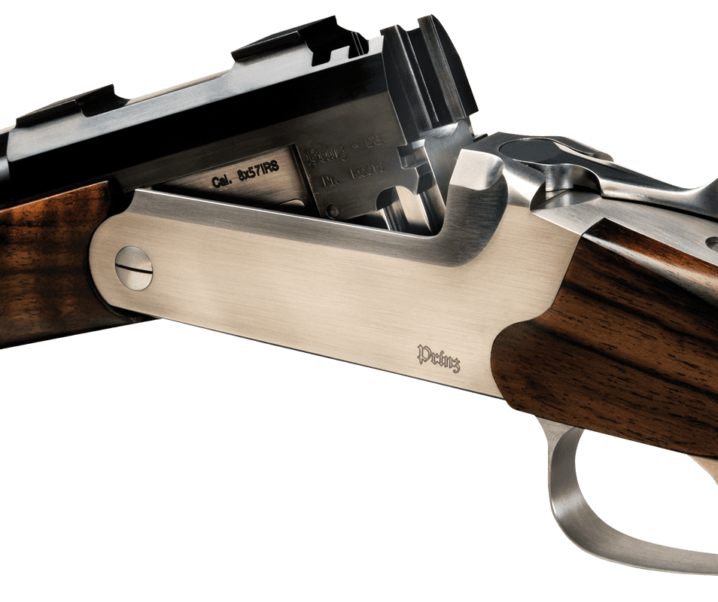The Abarth 208A Spyder was the result of collaborative work between Mario Felice Boano, Carlo Abarth, and Giovanni Michelotti. There was only one made and it was ordered by brothers of the Du Pont family. Being based on the racing Abarth 207A the road-legal 208A Spyder was made to be just as much fun to drive as a car can be.
Fast Facts
- The Abarth 208A Spyder was a road legal sports car created from the racing 207A.
- The 208A Spyder was the result of collaborative work between Mario Felice Boano, Carlo Abarth, and Giovanni Michelotti.
- This car was based on Fiat 1100 basic parts but had a custom chassis and body.
- There was only one Abarth 208A Spyder ever made and it was originally ordered by brothers of the Du Pont family.
- This unique car is for private sale at time of writing.
The creation of the Abarth 208 A Spyder brought together some of the greats of Italian car design and building: Mario Felice Boano, Carlo Abarth, and Giovanni Michelotti.
The 208 A Spyder had its parentage in the Michelotti designed Abarth 205A which was based on a custom platform chassis and Fiat 1100 B/E components.
The Abarth 205A was succeeded by the Abarth 207A Spyder which was based on a boxed platform design chassis incorporating Fiat 1100/103 suspension components but with performance features to enhance the car’s agility and handling.
A major change was the replacement of the Fiat 1100 leaf spring rear suspension with a coil spring system that provided better resilience and longer suspension travel, with longer shock absorbers.
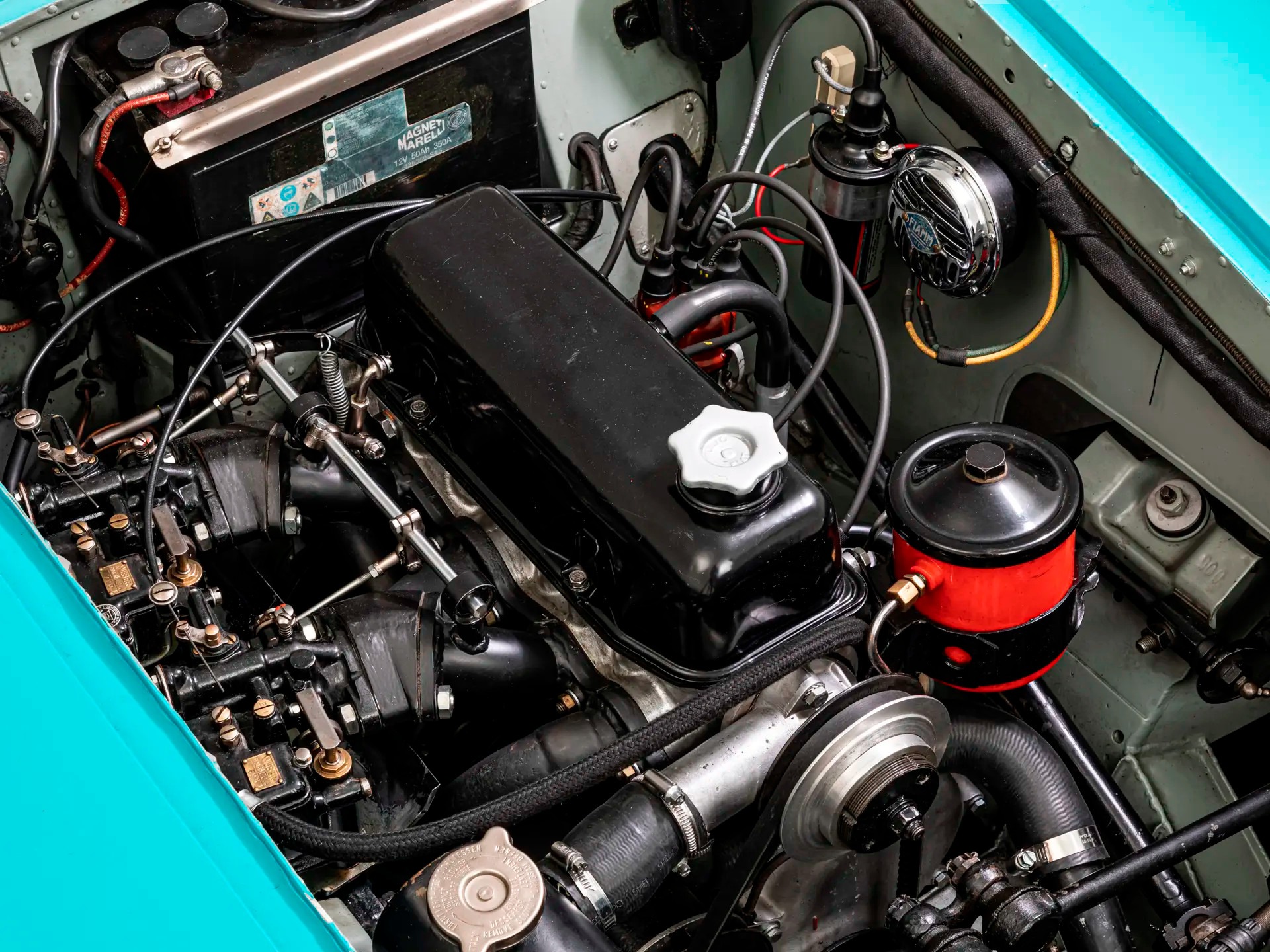
The Fiat 1100 on which the Abarth 205A and 207A were based was a conventional longitudinally mounted front engine and rear wheel drive layout, and this was carried over into the 205A and 207A.
After these designs Carlo Abarth would later become best known for his rear-engine cars, the best known probably being his high performance versions of the Fiat 500. He would choose the scorpion as the symbol of his car company and his rear-engine cars with their “sting in the tail” lived up to their scorpion badge.
But the 205A and 207A were not “sting in the tail” scorpion cars but nicely balanced front engine rear-wheel-drive performance cars, made to be fast, and made to be wonderfully enjoyable driven fast.
This was important for both cars but especially for the 207A because it was created solely for racing, not for the road.
The Abarth 207A was given steel bodywork by Boano, a man who worked closely with Michelotti and who was commissioned by famed American designer Raymond Loewy to build the custom coachwork Loewy had designed for his Jaguar XK140.
In all ten of the Abarth 207A racing cars were made and shipped to the Tony Pompeo dealership in New York where they found new homes and were periodically taken out for enjoyable motor-sport competitions.
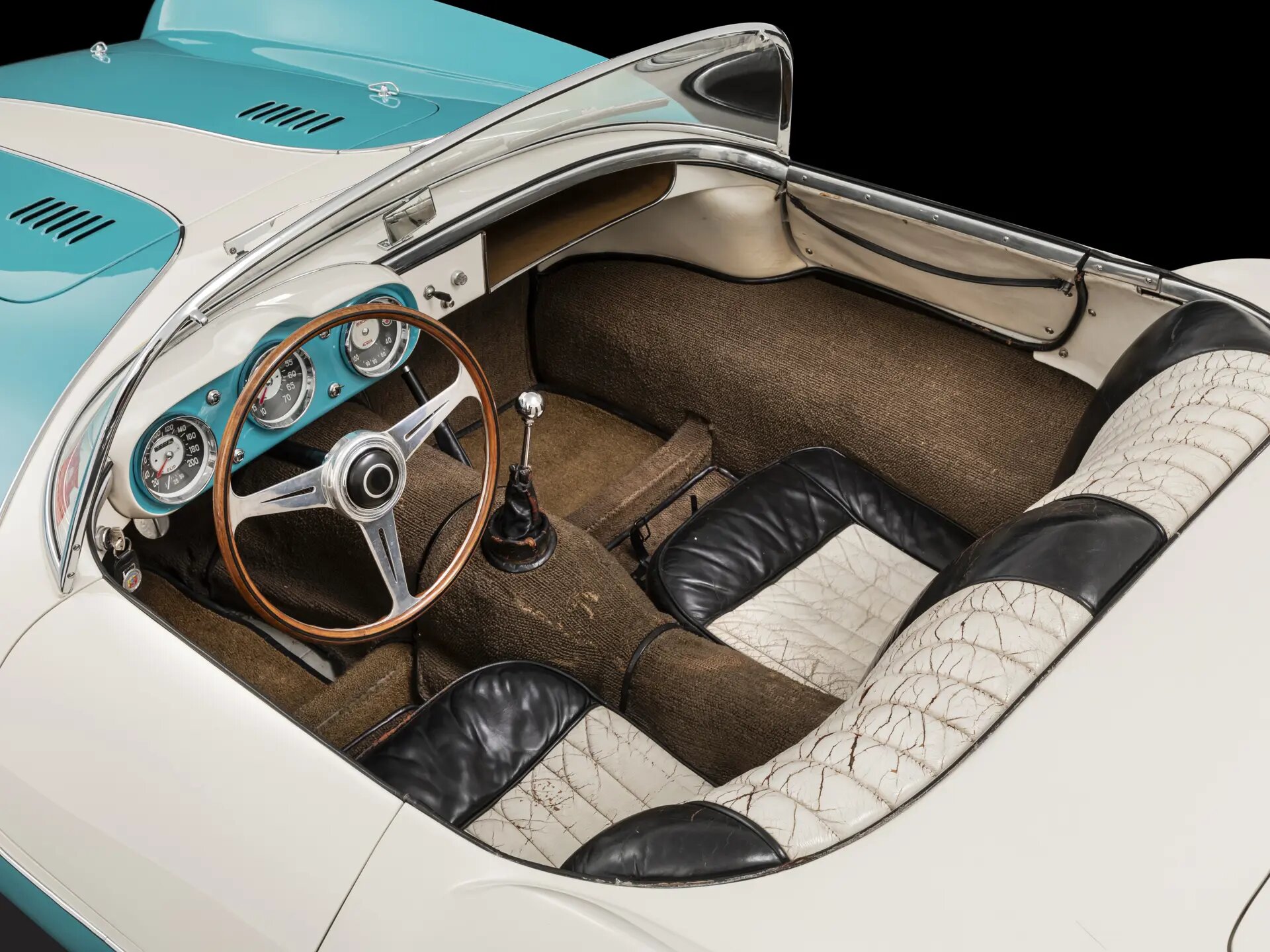
The 207A was given one opportunity to compete at the top level of motor-sport in 1955 when one was entered in the 12 Hours of Sebring. The car performed well and finished in an unofficial second place in its class – but because of an irregular refueling it was disqualified, and did not take home a trophy.
The attempt at the 12 Hours of Sebring demonstrated to both Tony Pompeo and Carlo Abarth that the 207A was not going to be a match for such sophisticated competition as the British Lotus Mark IX and new Lotus Eleven on the racetrack, so a change of tack was necessary and Carlo Abarth decided that re-creating the car as a road car might just be the right move, and he commissioned Boano to do the re-modeling work and build the new cars.
So the 207A racing car was modified to create two new prototypes: the 208A Spyder, and the 209A Coupé. These were both essentially racing cars but with nice comfortable seats and interior. The 208A Spyder was a fair-weather car as it had no weather protection, the sort of car you buy if you really wanted a motorcycle but preferred four wheels. The 209A Coupé was properly set up with steel roof, an American style wrap-around windscreen quite like the style of that used on the Facel Vega 500HK, and wind-up side windows.
As road cars these two prototypes had to have regulation headlights and were fitted with pop-up headlights, becoming some of the first of the post-war cars to have them.
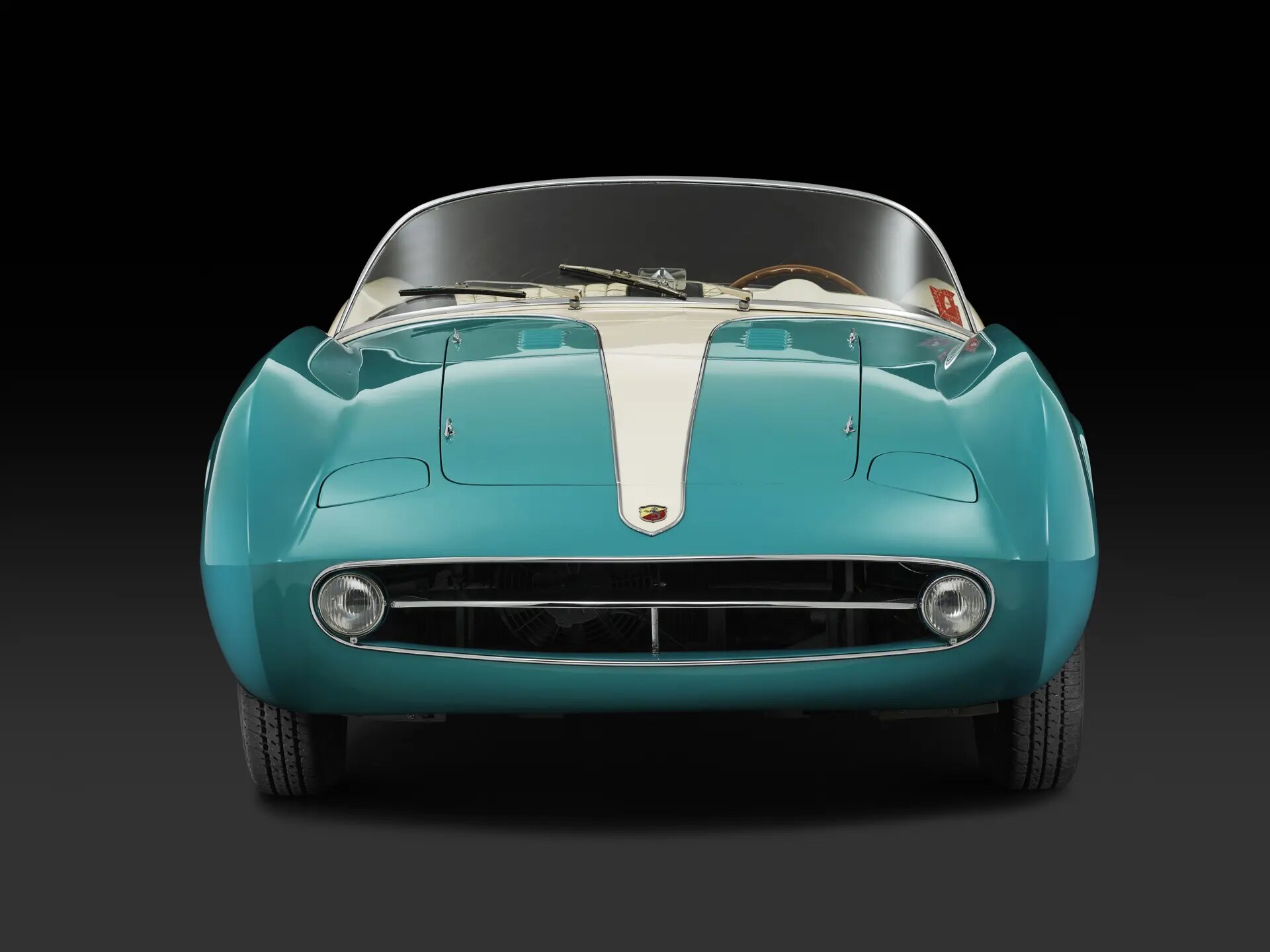
These two cars, the 208A Spyder and the 209A Coupé were shipped to Tony Pompeo’s dealership to gauge the buyer interest in them.
As it turned out the buyer interest just wasn’t there, but the two prototype cars found homes with the 208A Spyder having been ordered by two brothers of the Du Pont family. These brothers were both keen on motor-sport and had no doubt purchased the Abarth 208A Spyder to enjoy – and especially to enjoy it fast.
This Abarth 208A Spyder had been styled not only to be fast but to look fast, it featured twin exhausts along the passenger side and smart two-tone paintwork – probably done in Du Pont’s own automotive lacquer.
Under the hood the Fiat engine had the Carlo Abarth treatment being fitted with twin Weber carburetors so it could breathe in just as much fuel/air mix as that engine could demand: and it was fitted with a tuned Abarth exhaust to extract the very best performance possible.
Interestingly the Du Ponts exchanged the twin Weber carburetors for British SU ones: this is a swap normally done the other way around for performance cars and may have been done to make the Abarth engine behave in a more civilized way for road use.

After a few years of enjoying it the Du Pont brothers sold the car to a friend who had no doubt admired it: and in 1973 he later gifted it to an aircraft mechanic who worked for Du Pont who was named Bill Hale.
The car remained in Bill Hale’s ownership until 2007 when Etceterini collector Elad Shraga managed to persuade Bill Hale to part with it. The car was subjected to some restoration work of its body, while the interior was still in sufficiently good condition to keep in its original state.
This unique Abarth 208A Spyder is now up for sale, by RM Sotheby’s in a private sale, and provides the opportunity for a collector of such rare and unusual sports cars to acquire it.
You can find the private sale page with further details if you click here.
Picture credits: All pictures courtesy CARRSTUDIO ©2023 Courtesy of RM Sotheby’s.

Jon Branch is the founder and senior editor of Revivaler and has written a significant number of articles for various publications including official Buying Guides for eBay, classic car articles for Hagerty, magazine articles for both the Australian Shooters Journal and the Australian Shooter, and he’s a long time contributor to Silodrome.
Jon has done radio, television, magazine and newspaper interviews on various issues, and has traveled extensively, having lived in Britain, Australia, China and Hong Kong. His travels have taken him to Indonesia, Israel, Italy, Japan and a number of other countries. He has studied the Japanese sword arts and has a long history of involvement in the shooting sports, which has included authoring submissions to government on various firearms related issues and assisting in the design and establishment of shooting ranges.

